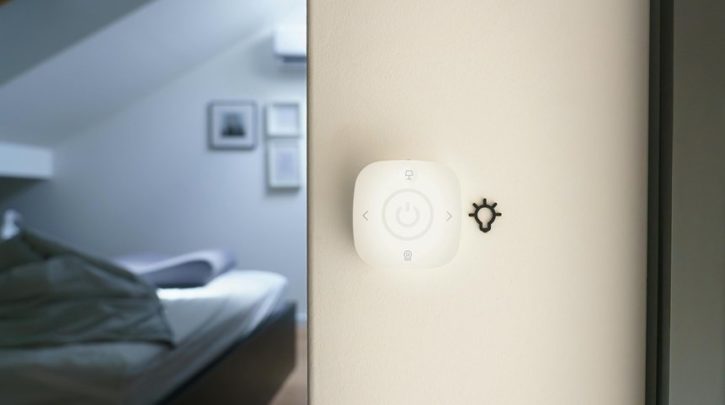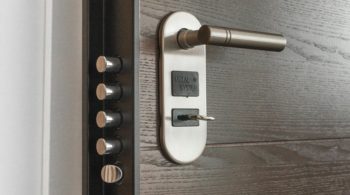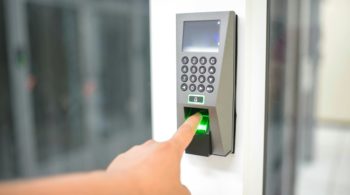When choosing Zigbee devices for your smart home, you’ll want reliable buttons, sensors, and lighting that work smoothly together. Devices like the Third Reality button and Sonoff switches offer strong performance and easy integration with platforms like Google Home. Knowing how to select and set up these components can improve your home’s responsiveness and security. But to get the most out of your system, you’ll also need to take into account network setup and compatibility factors that often go overlooked.
Essential Zigbee Button and Sensor Devices
When setting up your smart home, choosing the right Zigbee buttons and sensors is essential for effective automation.
You’ll appreciate the smart button benefits offered by devices like the Third Reality button, which supports multiple triggers and battery monitoring via Home Assistant. This versatility lets you customize responses easily.
For detecting physical activity, the Third Reality vibration sensor stands out with its vibration sensor features, including movement detection and a built-in audible alarm with adjustable volume.
These devices are simple to install and integrate smoothly with your system, enhancing your smart home’s responsiveness without breaking your budget.
Smart Lighting Options With Zigbee Compatibility
Expanding your smart home setup to include Zigbee-compatible lighting can greatly enhance both functionality and ambiance.
You’ll find smart bulb features like RGB color changing and adjustable white light temperatures from brands like Hive and Aurora.
Consider these options:
- Use the Quara T1 strip for easy-to-install RGB lighting that works with Home Assistant.
- Try affordable Sonoff two-packs, offering LCD displays and battery monitoring.
- Customize lighting effects and schedules with the W LED app for personalized setups.
These choices let you automate colors for holidays or moods, making your home smarter and more vibrant.
Efficient Power Management Solutions
You can improve your home’s energy efficiency by using smart power bars that let you control each outlet individually while charging devices through built-in USB ports.
Affordable smart switches, like those from Sonoff, integrate easily into your setup and keep important outlets accessible for other gadgets.
These tools help you manage power remotely, so you can automate schedules and cut down on unnecessary energy use without extra hassle.
Smart Power Bars
A smart power bar offers a practical way to manage multiple devices efficiently by giving you individual control over each outlet.
With smart power, you can enhance energy efficiency and reduce waste. Here’s why you’ll appreciate using one:
- Control each outlet separately via Zigbee-compatible platforms like Home Assistant.
- Manage USB ports for charging, integrating them seamlessly into your smart home.
- Enjoy easy setup and affordable prices, often under €50.
This makes smart power bars a cost-effective, user-friendly solution to optimize your home’s energy use and device management.
Affordable Smart Switches
When managing power efficiently without overspending, affordable smart switches offer a practical solution that fits most budgets.
You’ll find budget friendly options like the Sonoff Zigbee Mini R2 Extreme, priced at just €8.90, which lets you control multiple devices seamlessly.
These Zigbee switch benefits include easy integration into your existing setup and unobstructed outlet use, as seen in Sonoff models around €12.
If portability matters, consider the Tuya Wireless Smart Zigbee Battery Operated Scene Switch at €23.90.
Even without a hub, switches like the Sonoff SNZB-01 at €7.99 simplify your home automation and power management.
Motion and Contact Sensors for Enhanced Security
Although securing your home involves multiple strategies, integrating motion and contact sensors offers a reliable layer of protection by detecting movement and unauthorized access in real time.
To maximize effectiveness, focus on:
- Sensor placement – install motion sensors in high-traffic or entry areas, and contact sensors on doors and windows for prompt alerts.
- Battery longevity – choose models like Hive that use standard batteries with long life to reduce maintenance.
- Ease of installation – select plug-and-play Zigbee sensors for quick setup without technical hassle.
These steps help you maintain continuous, dependable security with minimal effort.
Integration With Home Automation Platforms
Securing your home with motion and contact sensors becomes even more effective when you connect these devices to a home automation platform.
You can integrate Zigbee security devices seamlessly with popular platforms like Google Home, Amazon Alexa, SmartThings, or Home Assistant. Using a USB Zigbee radio adapter, such as the Sonoff ZBDongle-P, helps your system communicate smoothly.
Thanks to device interoperability supported by Zigbee standards, products from different brands work together effortlessly. This integration lets you automate actions based on sensor input, giving you centralized control and enhancing your smart home’s responsiveness and safety.
Tips for Optimizing Zigbee Network Performance
To get the most out of your Zigbee network, you’ll want to start by using mains-powered devices as routers since they serve as repeaters that boost communication signals.
Here are three tips to optimize performance:
- Monitor network congestion by limiting the number of battery-powered devices; too many can slow down communication.
- Regularly perform firmware updates on your Zigbee coordinator and devices to maintain compatibility and improve reliability.
- Use external USB radio dongles to strengthen signal reception and keep your network stable.
Following these steps will help guarantee your Zigbee smart home runs smoothly and efficiently.
Frequently Asked Questions
Can Zigbee Devices Work Without an Internet Connection?
Yes, Zigbee devices can work without an internet connection because Zigbee networks rely on local control. You’ll still control your devices locally through the network, ensuring automation and communication even if your internet goes down.
How Does Zigbee Compare to Wi-Fi in Battery Usage?
Zigbee vs Wi Fi, you’ll find Zigbee uses way less power, boosting battery longevity for your devices. Wi-Fi drains batteries faster since it handles more data and stays constantly connected, so Zigbee’s better for long-lasting use.
Are Zigbee Devices Compatible Across Different Brands?
Yes, you’ll find Zigbee devices generally compatible across different brands due to Zigbee ecosystems promoting brand interoperability. This means you can mix and match devices from various manufacturers without worrying about connectivity issues.
What Is the Typical Range of a Zigbee Device?
You’ll find the typical Zigbee range is about 10 to 20 meters indoors, though walls can reduce it. Zigbee limits extend further outdoors, up to 100 meters, but your environment heavily influences actual performance.
Can Zigbee Devices Cause Interference With Other Wireless Signals?
Yes, Zigbee interference can happen since it shares the 2.4 GHz band with Wi-Fi and Bluetooth. You’ll want to manage device coexistence carefully to minimize signal clashes and guarantee smooth smart home performance.
Christina Pulluck helped bring Nebula Electronics from a a science and tech decision forum to a full-fledged news site by creating a new design and branding. She continues to assist in keeping the site responsive and well organized for the readers. As a contributor to Nebula Electronics, Christina mainly covers mobile news and gadgets.







